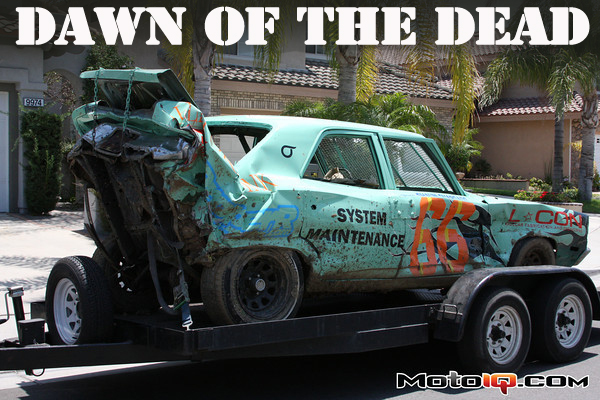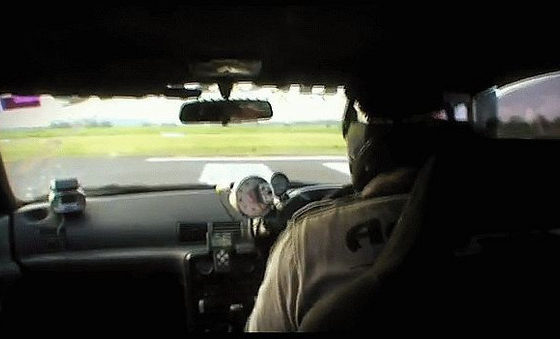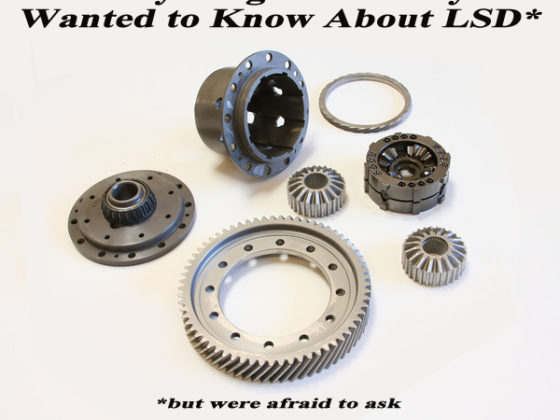Demolition Derby Tech part 2
By Mike Kojima and Aaron Guardado
In our last story, we covered the basic prepping of a demolition derby car including the amazingly rudimentary safety equipment. Although the safety prep at first glance seems to be woefully inadequate it has been developed and proven over generations of competition.
 |
 |
| Although the drivers side of the car took multiple hits including one high speed, 30 mph one, the lateral beam and welded doors amazingly allowed the structure to retain decent integrity |
 |
 |
| An interior view shows how the “B” pillar lateral beam prevents intrusion and spreads the load throughout the structure. Manufactures are you seeing this? Some of this could be applied to our regular cars and could really help in side impacts, probably the worst case in our modern cars |
 |
  |
| Even with a 30 mph direct hit to the drivers door there is minimal intrusion into the passenger area. The driver received very minor injuries and although somewhat bruised up, was able to continue with the event. The lateral beam is quite effective! |
 |
 |
 |
| The passenger side of the car took some equally hard hits but also retained integrity. The damage is mostly cosmetic although some distortion of the structure is seen. The car died due to an ignition system problem but will still live to see another event |
 |
| Don't kill us for using these classic alloy Cragar wheels for this sort of thing but we did. Note the crack caused my impacts. A forged alloy wheel will bend where a cast wheel will crack. For destruction derby its best to just use a steel wheel for this reason |
After we prepared two cars as seen in part one of this series. We proceeded to enter them in a destruction derby, the infamous Orange Crush event at the Orange County fair. We faired ok, making it through most of the event with only minor injuries despite the car’s taking some enormous punishment.
 |
 |
 |
| On a destruction derby car, strategic weak spots are sometimes made in the back of the car so it will fold upward. This ensures that the rear wheel won't get lifted off the ground. Most experienced drivers do their hitting with the rear of the car. Our second car took some major hits, one with two cars hitting each other from maximum speed backwards! Our structural mods worked and the back folded upward. What finally stopped the car was the driveshaft falling out of the transmission |
 |
| Despite the over 50 mph closure speed of the last big impact, our mods allowed the back of the car to act like a crumple zone. The drivers compartment maintained complete integrity and the fuel cell and seat retaining chain are fully unharmed and functional. Many of these impact could be deadly in an unmodified car. What we can all learn in destruction derby is how loads travel through a chassis and we can use this knowledge to build better cages and braces for our race and street cars |
Our cars also made it through most of the event, we didn’t win but did ok, especially considering that it was a first event for us. All of our preparation performed well and the only issue to be improved is perhaps driving. We will see what happens next year.
Related




















